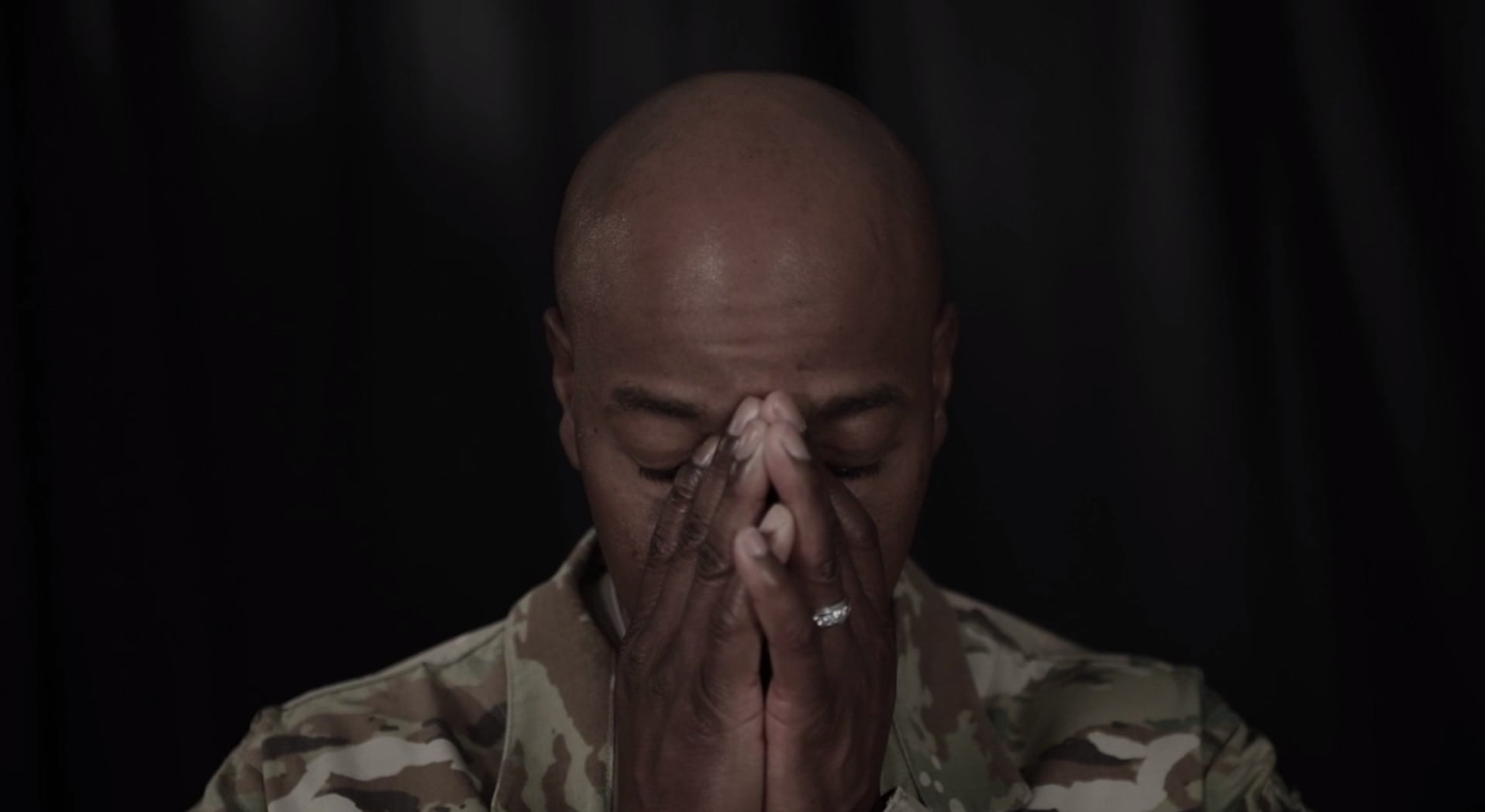The Pentagon is now so concerned about the welfare and well-being of service members and their families that issues they face have made it to the top 10 management challenges it faces in 2020.
Suicide, substance abuse, sexual assault, unsafe housing, child care, spouse unemployment and health care are issues that threaten wellness and lives, affecting force readiness and national security, as determined by the DoD Inspector General.
While most of the other nine challenges have been persistent, as noted in previous DoD IG annual reports, the inclusion of such family and social issues is new this year, along with challenges facing the Pentagon on supply chain management and security.
The 10 top challenges aren’t ranked in order of importance, according to the report, released Nov. 4. All are “critically important management challenges facing the DoD.” Each department inspector general is required by law to prepare an annual statement summarizing what he or she considers the most serious management and performance challenges facing that agency.
Other challenges on the list are: countering China, Russia, Iran and North Korea; countering global terrorism; ensuring ethical conduct; addressing financial management weaknesses identified in the first DoD-wide financial statement audit; enhancing DoD cyberspace operations and capabilities; enhancing space-based operations, missile detection and response, and nuclear deterrence; improving supply chain management and security (new); acquisition and contract management; and providing comprehensive and cost-effective health care.
While many of the well-being concerns have not been on the list before, they are persistent, such as housing, spouse unemployment and inadequate child care, the report noted. The challenges service members and their families face “can be exacerbated by frequent deployments, relocations and the stress that those events place on the service member’s family,” it said.
“The challenges are longstanding and difficult to address, but it is critical for the DoD to make progress in these areas to help ensure the welfare and well-being of service members and their families.”
Health concerns that endanger the lives of troops and families and the crime of sexual assault are significant challenges the DoD needs to address to protect its members, the report stated.
Secretary of Defense Mark Esper announced in July that he was placing a particular focus on the well-being of military families.
“We’re gratified that the IG added ‘service member and family well-being’ to the list of challenges,’ said Kelly Hruska, government relations director for the National Military Family Association.
“These are long-time issues, but every time DoD highlights them in reports like these, or in the Secretary’s comments, military leaders are reminded how important these issues are to the retention of service members and their families,” Hruska said. “It also reminds military leaders that they are responsible for these issues and they can’t abdicate them to contractors or non-federal entities.”
Suicides
The OIG noted that the DoD’s approach to tracking and analyzing suicides falls short of what is needed to fully understand the cause of suicide or trends — information needed to needed to develop more effective prevention policies and programs.
DoD, which has seen the active duty suicide rate rise from slightly less than 19 per 100,000 in 2013 to 22 per 100,000 this year, continues to tolerate incomplete suicide event reports from investigators following a death, reports of personal information and factors at the time considered critical to understanding a victim’s frame of mind prior to a suicide.
RELATED

Without such information, the department “will continue having difficulty conducting accurate trend or causal analysis necessary for developing more effective suicide prevention policy and programs to reduce suicide rates,” the OIG wrote.
Sexual assault
Incidents of sexual assault, investigations and prosecution of sex crimes continue to beleaguer the Pentagon, which must improve their policies and programs to prevent such crimes from occurring and hold perpetrators accountable, the report noted.
Since sexual assaults take a mental and physical toll on victims and degrade readiness, DoD must address shortcomings in investigations and be more aggressive in pursuing legal action against those who commit such crimes, the OIG noted.
Previous IG investigations have found that in some cases, victims were not asked whether or how they wanted to pursue prosecution, nor were their preferences documented. In other cases, officials failed to accurately document discussions with or provide adequate support to troops who were victims but decided not to file an official report.
Quoting Navy Rear Adm. Ann Burkardt, director of the Defense Sexual Assault Prevention and Response Office, from earlier this year, the IG wrote that “every sexual assault in the military is a failure to protect the men and women who have entrusted us with their lives.”
Substance abuse
Another major concern facing service members and the Pentagon – one that plays a role in suicide and sexual assault – is substance abuse. According to the OIG, misuse of alcohol and drugs continues to affect readiness despite programs in place to fight it, the OIG noted.
Nearly 30 percent of service members are binge drinkers, defined as consuming 5 or more drinks at one time for men and four or more drinks for women, and 21 percent use opioid pain relievers, according to the 2015 DoD Health Related Behaviors Survey.
Alcohol is a factor in roughly 14 percent of active duty military accidental deaths, according to a Congressional Research Service report.
While DoD has awareness campaigns, prevention programs and tracking initiatives, such as the DoD Prescription Monitoring Program, continued zero tolerance policies and stigma regarding substance abuse “pose difficulties in identifying and treating substance use problems in military personnel as does a lack of confidentiality that deters many who need treatment from seeking it,” the OIG noted.
Housing
One place where military leaders have acknowledged they abdicated their responsibility is military housing, where families have reported problems with mold, lead-based paint and pest infestations, and expressed frustrations in getting their landlords to fix them. The IG report cites examples of reports from the Government Accountability Office and the DoD IG in 2017 and 2018, calling attention to the need for DoD to improve its oversight of installations and housing. The DoD IG issued seven reports detailing hazards with electrical systems, fire protection systems and environmental health and safety hazards in military and privatized housing. While the services agreed to the recommendations that were made, military members and families continued to raise issues.
This new IG report notes that the military services have focused more on addressing previous IG recommendations regarding oversight, and have taken other steps to address the problems. One is the pending tenants bill of rights. It will lay out a number of rights for families living in privatized housing, such as professional property management services, responsive communications with the landlord, prompt and professional repairs, and processes for dispute resolutions. According to this IG report, it will affirm that families in privatized housing have the right to have their rental payments withheld from the property owner or manager until a dispute is resolved, among other things.
With each challenge listed, the IG details some work that has been done to address it, as well as ongoing work.
Child care: Currently DoD’s system of care provides about 160,000 child-care spaces. But defense and service personnel officials testified before Congress in May that there are several installations where the wait time for on-installation child care is more than six months. For example, Fort Bragg, N.C., has a waitlist of more than a year.
Military child care is highly regulated and is recognized for its high quality. In addition, taxpayer dollars help subsidize the cost. Parents pay fees based on total family income.
DoD is seeking to address the inadequacy with programs such as the fee assistance program for active duty service members who are aren’t able to get child care on base, to help subsidize the cost of care outside the gates.
Spouse employment: DoD has attacked the problem of high spouse unemployment on several fronts, including working with states to expedite or exempt professional licensing requirements for military spouses, and establishing education and employment programs for military spouses. The IG report noted that Government Accountability Office auditors found that only about 7 percent of eligible spouses received tuition assistance through the My Career Advancement Account program, known as MyCAA. Spouses of junior enlisted and junior officers are eligible to receive up to $4,000 in assistance. One reason for the low participation rate is that the program doesn’t cover bachelor’s degrees, auditors found.
Health care: The DoD faces a massive challenge in managing its $33.3 billion health care system that provides medical care and services to 9.6 million beneficiaries and is in the midst of a system overhaul. The OIG said DoD should tread carefully through the transformation, which has given the Defense Health Agency ownership and management of all military medical facilities.
RELATED

“Establishing clear and effective authority, direction, and control over military medical treatment facility health care will be difficult and must be carefully planned to ensure beneficiaries continue to have access to high -quality and safe health care,” the OIG stated.
DoD also must watch the rollout of a new electronic health records system carefully, the DoD IG noted. The effort has had significant snags since its initial launch in 2017, with users reporting issues that had the potential to jeopardize patient safety, the IG said.
Rising health care costs also are a concern: the IG suggested that to better control costs it should study policies that provide some goods and services with limited or no cost containment controls, combat fraud and increase collections.
Each year, the OIG makes recommendations to the Pentagon on a host of issues, and according to the office, the Pentagon has taken steps to address them. Since 2017, the Defense Department has reduced the number of “open recommendations” on health care – those not completely resolved – from 114 to 81.
Karen has covered military families, quality of life and consumer issues for Military Times for more than 30 years, and is co-author of a chapter on media coverage of military families in the book "A Battle Plan for Supporting Military Families." She previously worked for newspapers in Guam, Norfolk, Jacksonville, Fla., and Athens, Ga.
Patricia Kime is a senior writer covering military and veterans health care, medicine and personnel issues.





